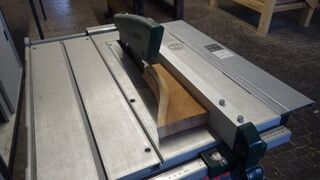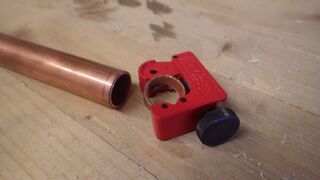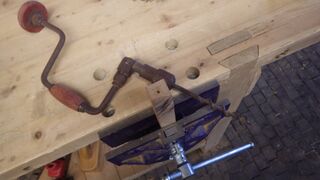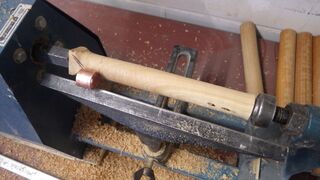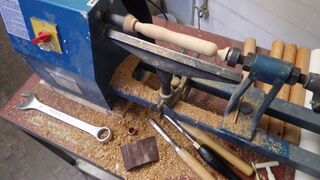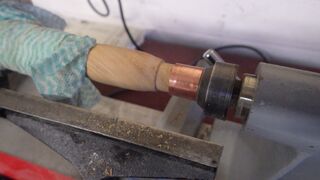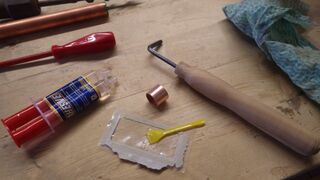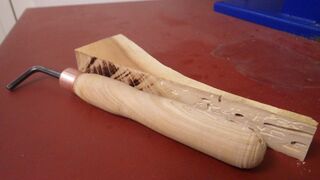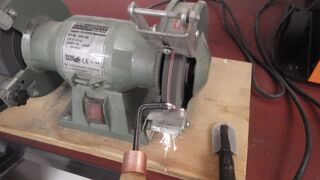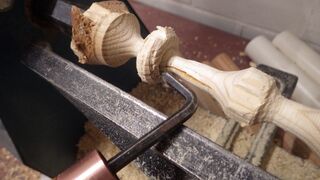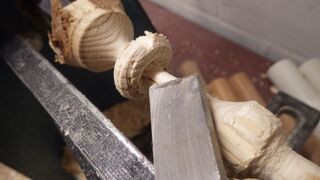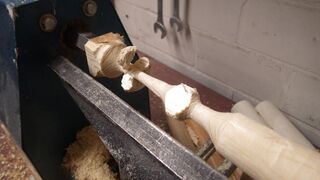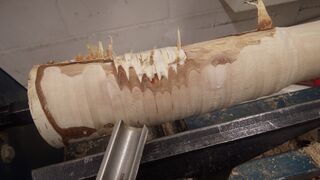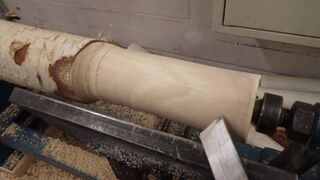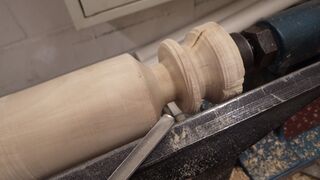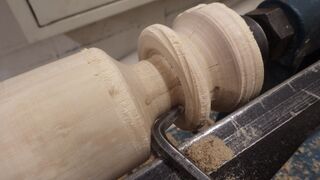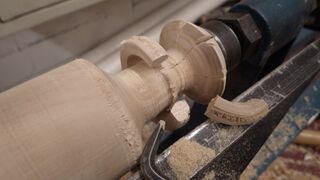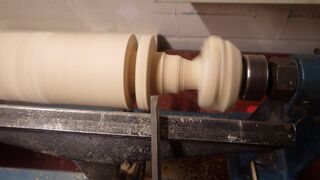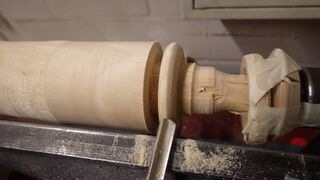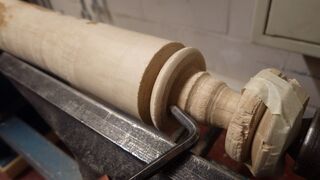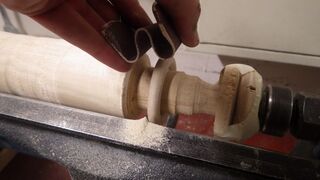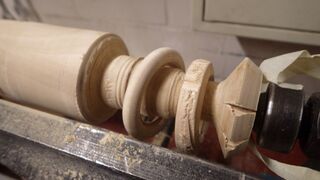Project:Captive Ring Turning
| ProjectInfoBox Captive Ring Baby Rattle | |
|---|---|
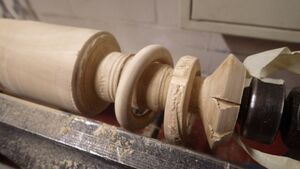
| |
| Status: | done, now adding photos |
| Release Date: | March 2019 |
| Initiator: | Lukas |
| Materials Used: | wood (apple log, self-dried), beeswax |
| Tools Used: | woodturning tools: |
| Approx. Cost: | next to nothing |
Turning "captive rings" is a tricky technique, but tried by many woodturners at some point.
I taught myself how to do it in order to make a one-piece rattle for some awesome babies!
tl;dr
- hard wood
- patience
- shape & sand as much as you can before "freeing" the ring
- expect some burn marks
Choosing the Material
You'll need especially even-grained and dense wood for this project or the rings are prone to breaking.
I was very happy with the apple log I had laid aside for this project all along, but the birch I used as a first test behaved pretty bad.
Making the Hook Tool
First of all, I made the special tool needed to undercut the rings. There are commercial "ring" or "hook" tools available but I had seen DIY versions made from hex keys and obviously just had to try that!
Materials:
- scrap wood (hardwood - here: cherry)
- surplus large hex key
-
square up the woodturning blank
-
the first step of most tool handle woodturning projects is the ferrule - e.g. cut with a pipe cutter
-
a brace is very useful to pre-drill the center hole on a woodturning blank
-
once the handle is turned round, the ferrule can be used to determine the shoulder position
-
make the handle rather long - like all woodturning tools, it should provide good leverage
-
a sturdy tailstock on the wood lathe can help to press the ferrule onto the tool handle
-
the hex key and ferrule should be glued in place with epoxy
-
amazing what you can still make out of a little bit of junk! (rest of the scrap wood for comparison)
-
finally grind a scraping tip onto the (former) hex key
Educative Failures
- first attempt: scrap fir wood
lessons learned: wood too soft, piece too thin
- next try: birch (poor quality)
lessons learned: wood still a bit too soft, parting tool much more suitable to define the ring width than spindle gouge, poor bevel on the hook tool, use even less force than usual
The second birch ring turned out (no pun intended) a lot better than the first so I decided to get serious!
more coming soon!
